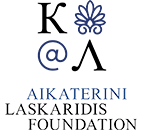Parthenon (413 Subjects)
The Parthenon: Fig. 1: Plan of the angle of the Temple, with the Lion's head. Fig. 2: Section of ditto. Fig.3: Capital of the antae. Fig. 4: Capital of the internal columns.
Α. Etruscan palmette. Β. Ancient Athenian palmette. C. Acroterion from temple on Aegina. D. Palmette from the Parthenon.
The entasis of various columns. Fig. 1. Entasis of the columns of the Portico of the Propylaea at Athens. Fig. 2: Do. Do. of the North Wing of the Propylaea. Fig. 3: Do. Do. of the Temple of Theseus. Fig. 4: Do. Do. of the Temple of Minerva, or Parthenon Fig. 5: Do. Do. Of the Choragic monument of Lysicrates.
The entasis of various columns. Fig. 1. Entasis of the columns of the North Portico of the Erechtheion. Fig. 2: Entasis of the columns of the East Portico of that Temple. Fig. 3: Entasis of the columns of the Temple of Hephaestus (Thiseion). Fig. 4: Entasis of the columns of the Parthenon. Fig. 5: Section of the capital of the centre anta of the Choragic Monument of Thrasyllus.
The Parthenon: 1. Plan of the temple. 2. West side of the temple. On the pediment the battle of Athena with Poseidon. On the metopes the Centauromachy. In fact, the Centauromachy is on the south side of the temple and not in the west, as the author suggests.
The Parthenon: 1. Part of the east side of the temple. 2. Longitudinal section of part of the pronaos.
Part of the south side of the Parthenon. On the metopes scenes from Centauromachy. Interestingly, the author adds to this side a pediment as well.
Sculptures from the south metopes of the Parthenos, with scenes from Centauromachy. 1. Head of Centaurus. 2α and 2β. Head of Lapithis.
View of Dekeleia, ancient city in Acharnes. In the background the Acropolis of Athens, the Saronic Gulf and the island of Aegina.































